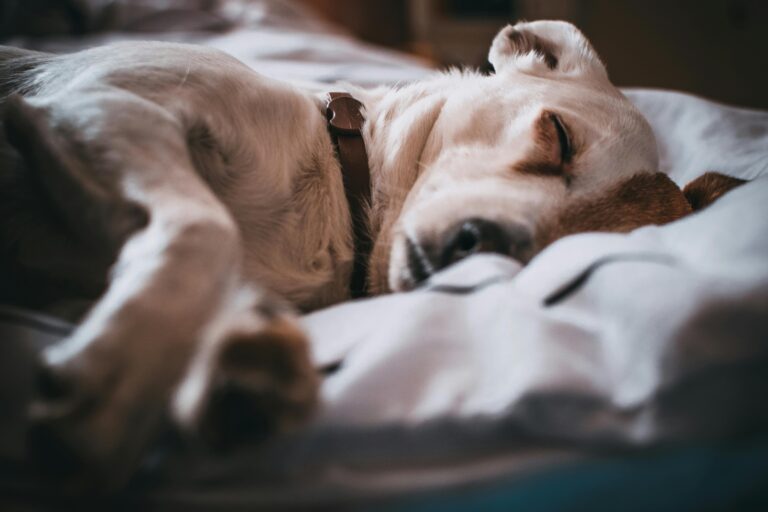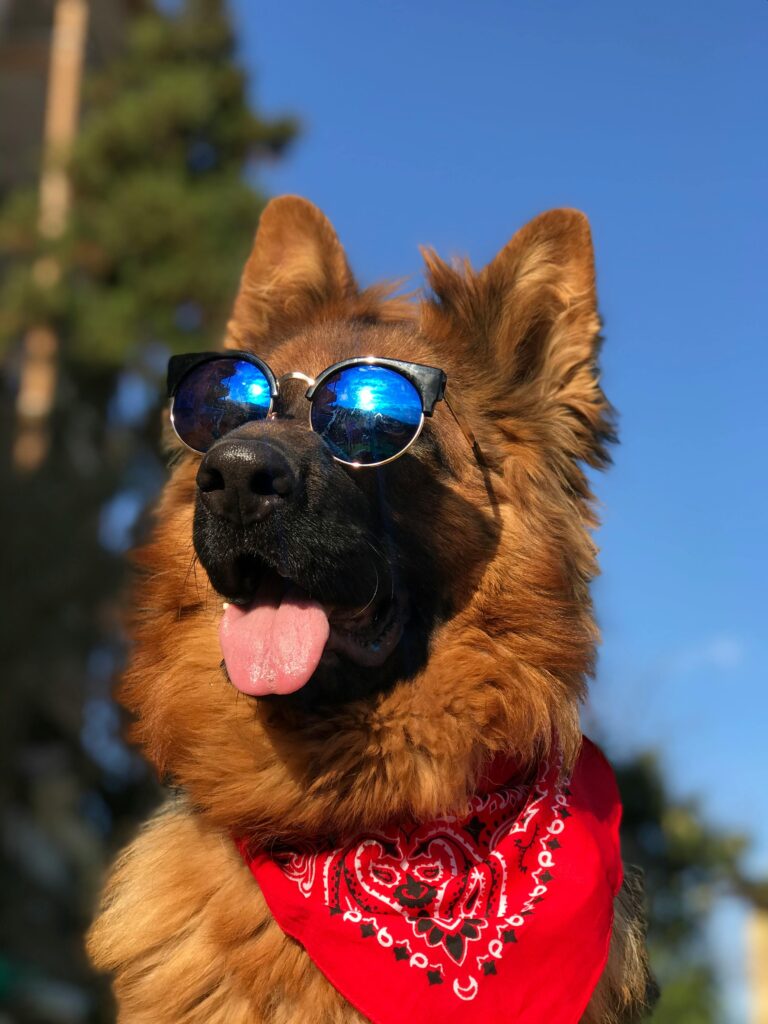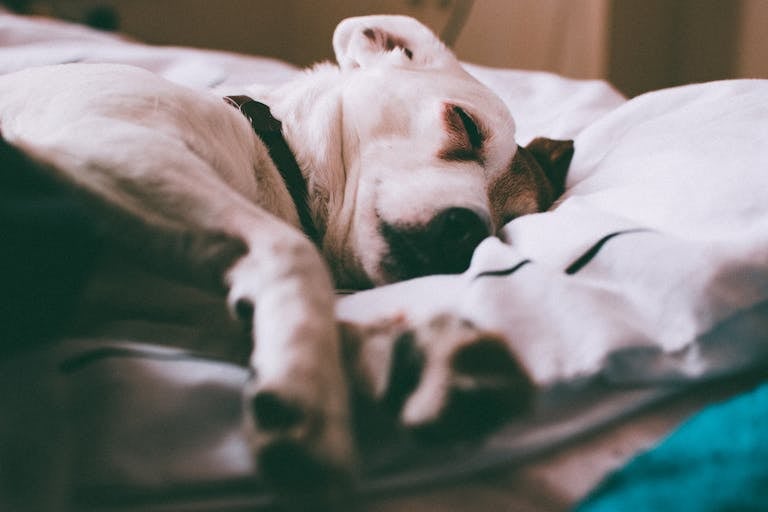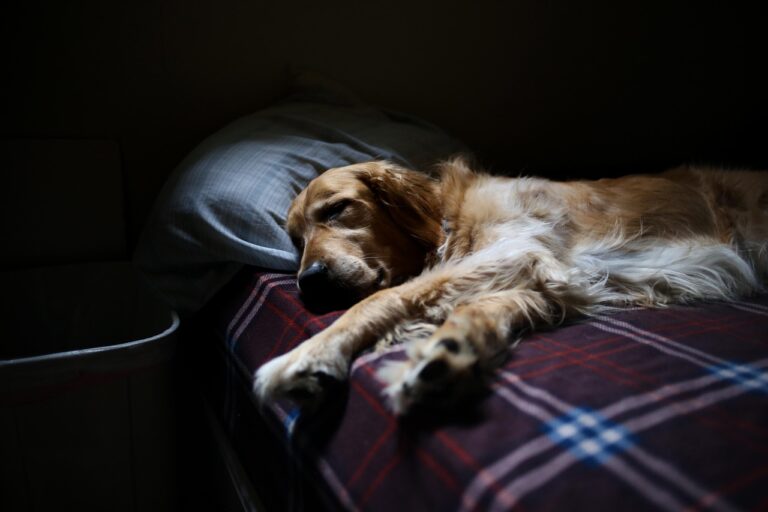Best Sleeping Positions for Dogs With Joint Pain
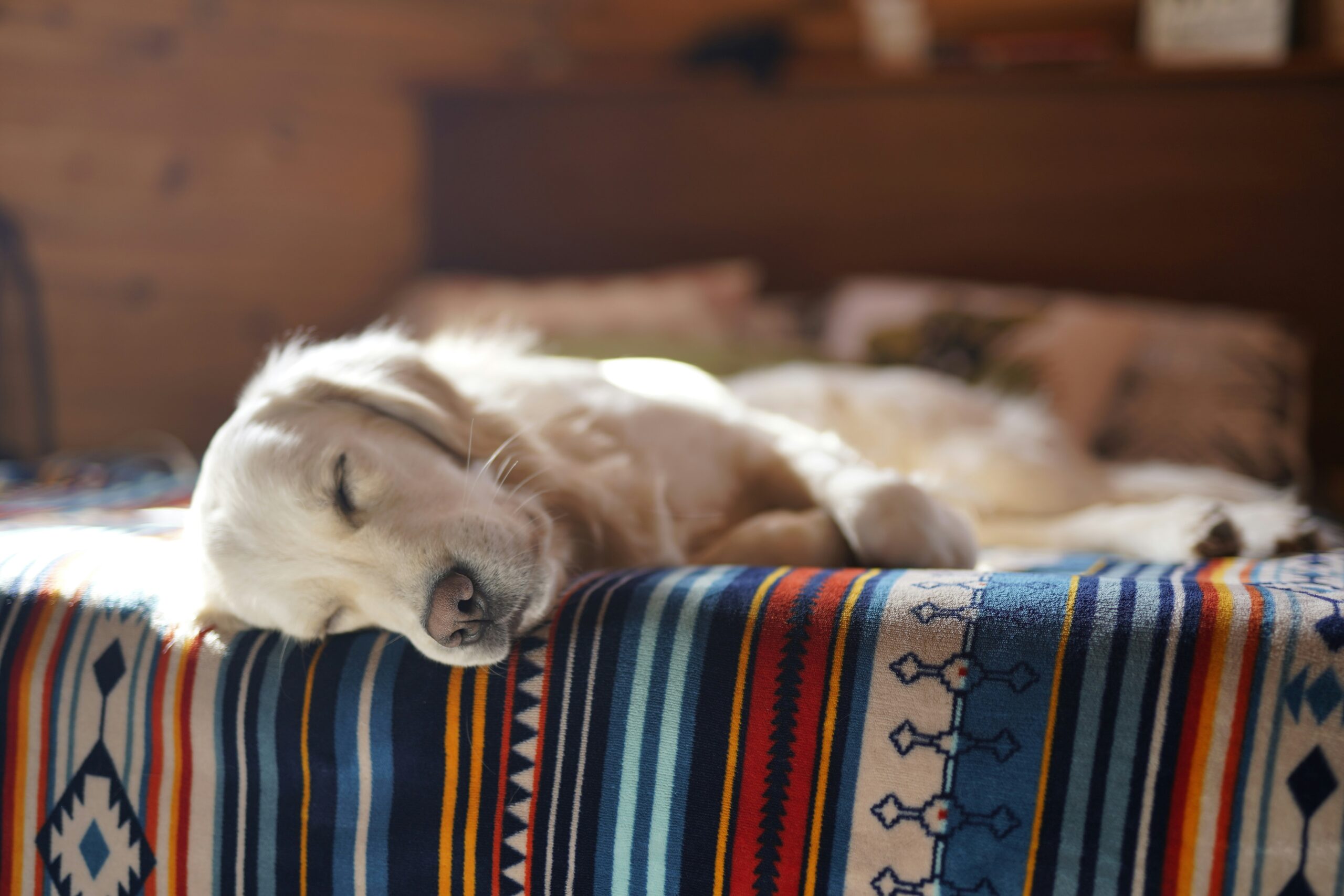
Dog sleeping positions can either soothe sore joints or make them worse. If your pup is dealing with arthritis, hip dysplasia, or age-related stiffness, the way they curl up at night matters more than most pet parents realize. The right position reduces pressure on hips, elbows, and the spine, helping your dog wake up rested instead of stiff. In this guide, we’ll break down the best dog sleeping positions for joint relief, how to encourage healthier habits, and what to avoid.
Why dog sleeping positions matter for joint pain 🦴
Joints are cushioned by cartilage and supported by surrounding muscles. When dogs sleep in a way that overextends the hips, twists the spine, or loads elbows unevenly, inflammation can build and morning stiffness follows. Supportive beds + better dog sleeping positions help distribute weight evenly, protect bony points, and keep the back aligned.
👉Orthopedic Beds That Support Joint Health
👉Dog Arthritis Sleep Tips: How to Help Your Senior Dog Rest Better at Night
The best dog sleeping positions for joint relief ✅
1) Side sleeper (most recommended)
Your dog lies on one side with legs extended. This keeps the spine neutral and spreads body weight across the rib cage and shoulder/hip on the down side. Pair with a memory-foam orthopedic bed to minimize pressure on the shoulder and hip.
2) Sprawled out / “Superman”
Front legs forward, back legs behind, belly on the bed. Great for cooling and for large breeds because weight is shared across more surface area. A flat, supportive surface helps the hips rest without being tucked.
3) Curled up / “Donut”
Dogs curl nose to tail to feel warm and safe. It’s fine for many pups, but if your dog has tight hips or sore elbows, long hours in a tight curl can compress joints. Choose a bolstered bed with room to stretch so your dog can shift from curl → side sleeper during the night.
4) Back sleeper / “Belly up”
Relaxed and adorable—often a sign your dog feels safe. However, for dogs with lumbar discomfort, this can accentuate a sway-back. Occasional is okay; encourage side sleeping for longer stretches.
5) Sphinx / “Loaf”
Chest down, back legs tucked, head up or on a bolster. Good for short naps, but not ideal overnight because it loads elbows and wrists. Offer a bolster so the head can rest and the front joints de-load.
6) Elevated bolster nest
Many seniors prefer a bed with supportive sides to lean on. This lets them adopt side sleep while propping the spine and neck in a neutral line. Among dog sleeping positions, this hybrid “side + bolster” combo is one of the easiest for stiff dogs to maintain comfortably.
Tip: After a quick evening walk, gently guide your dog into side sleep on an orthopedic surface and reward with calm praise. Small habits shift dog sleeping positions over time.
👉Best Calming Dog Beds for Anxious Pups in 2025 (great for dogs who won’t settle)
How to encourage healthier dog sleeping positions 🧠
- Choose the right surface. Orthopedic memory foam distributes weight and keeps joints from sinking to the floor. (Egg-crate only adds airflow; it’s not the same support.)
- Size the bed correctly. Your pup should stretch fully without paws or hips hanging off—cramped beds force poor dog sleeping positions.
- Use bolsters wisely. A supportive edge lets side sleepers prop the neck and keeps the spine straight.
- Control temperature. Overheated dogs sprawl awkwardly; chilled seniors curl too tightly. Keep the sleep zone comfy.
- Add warmth for arthritis in winter. Heated pads can relax muscles so side sleeping feels better.
- Reduce jumping strain. Ramps or stairs prevent nightly flare-ups that undo progress you make with better dog sleeping positions.
- Evening routine. Short walk, gentle massage, then lead your dog onto the bed in side position and mark with praise or a low-cal treat.
👉Best Heated Dog Pads for Cold Winter Nights
👉Top 5 Dog Stairs for High Beds and Older Dogs
👉How to Introduce a Ramp to a Senior Dog Safely
Positions to limit or watch carefully ⚠️
- Tight curl all night: Can compress hips and elbows; fine for part of the night but encourage stretching to a side sleeper.
- Twisted spine (front half one way, back half the other): Cute, but prolonged twisting can irritate the lower back.
- Elbow-loaded loaf for hours: Elevate the chest on a pillow/bolster or encourage a shift to side sleeping.
If pain or stiffness persists despite improving dog sleeping positions, speak with your veterinarian about joint supplements, weight management, and a tailored exercise plan.
👉 American Kennel Club – Arthritis in Dogs
Quick checklist to optimize sleep tonight ✅
- Orthopedic foam bed sized to your dog
- Bolster or pillow for neck support
- Room temperature comfortable (not too hot/cold)
- Guide into side sleeper and reward
- Ramps/stairs to bed or couch to prevent flare-ups
- Track which dog sleeping positions your pup chooses and adjust the setup weekly
Final Thoughts 💡
Small changes make a big difference. By pairing a supportive surface with healthier dog sleeping positions, most dogs wake up looser, happier, and more mobile. Pay attention to how your pup settles, make gentle adjustments, and celebrate progress—better sleep tonight means easier steps tomorrow.


